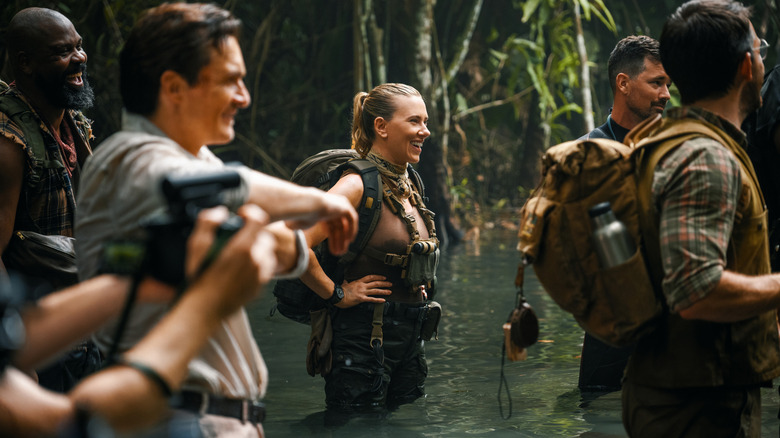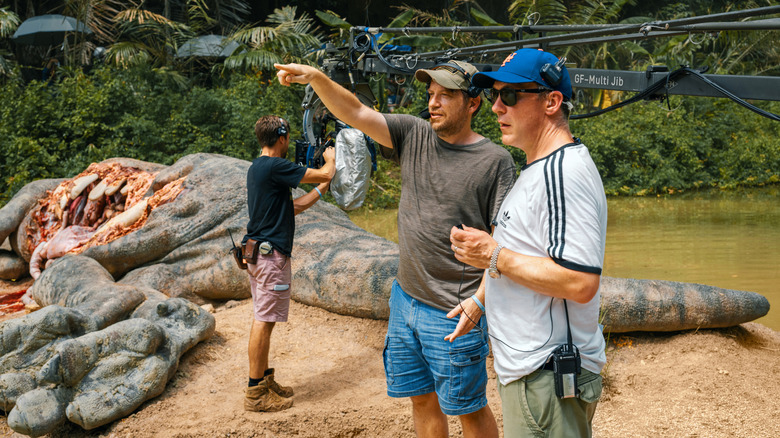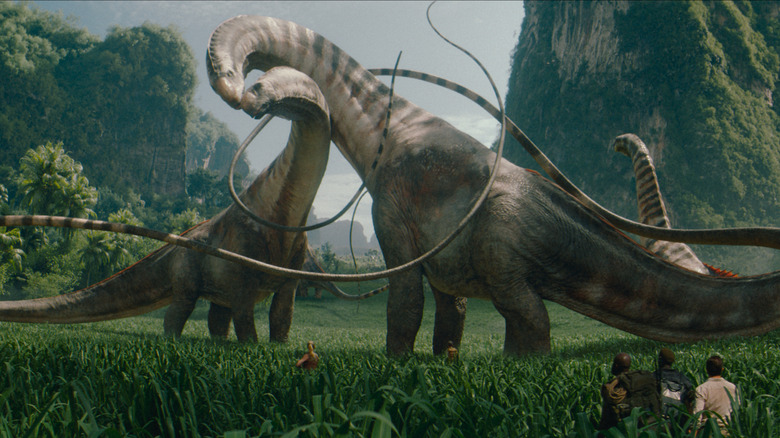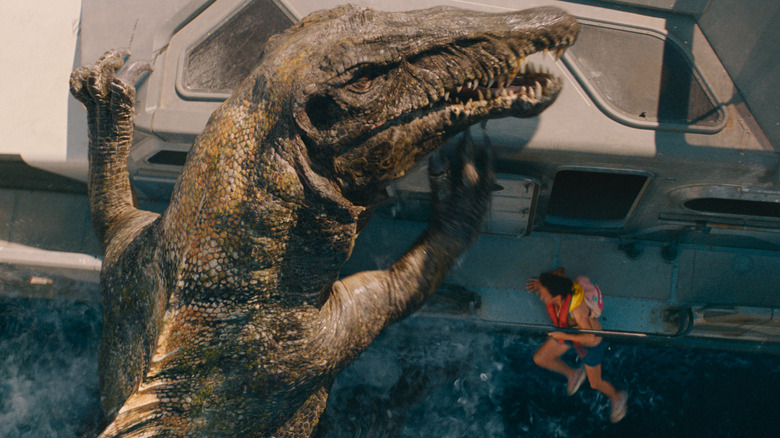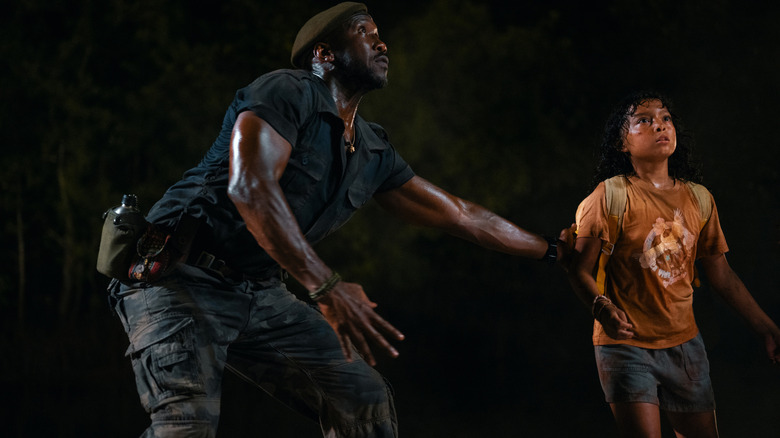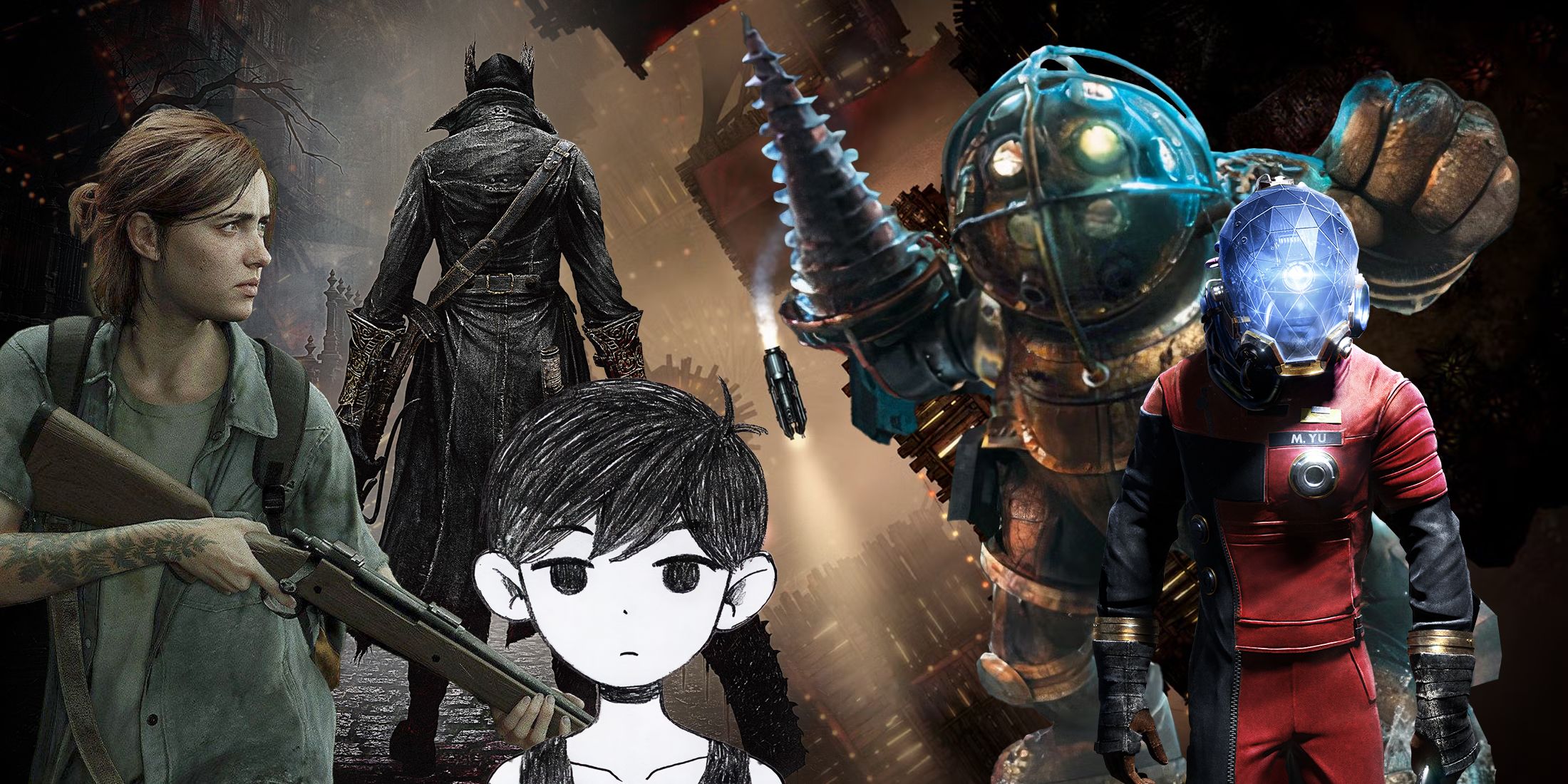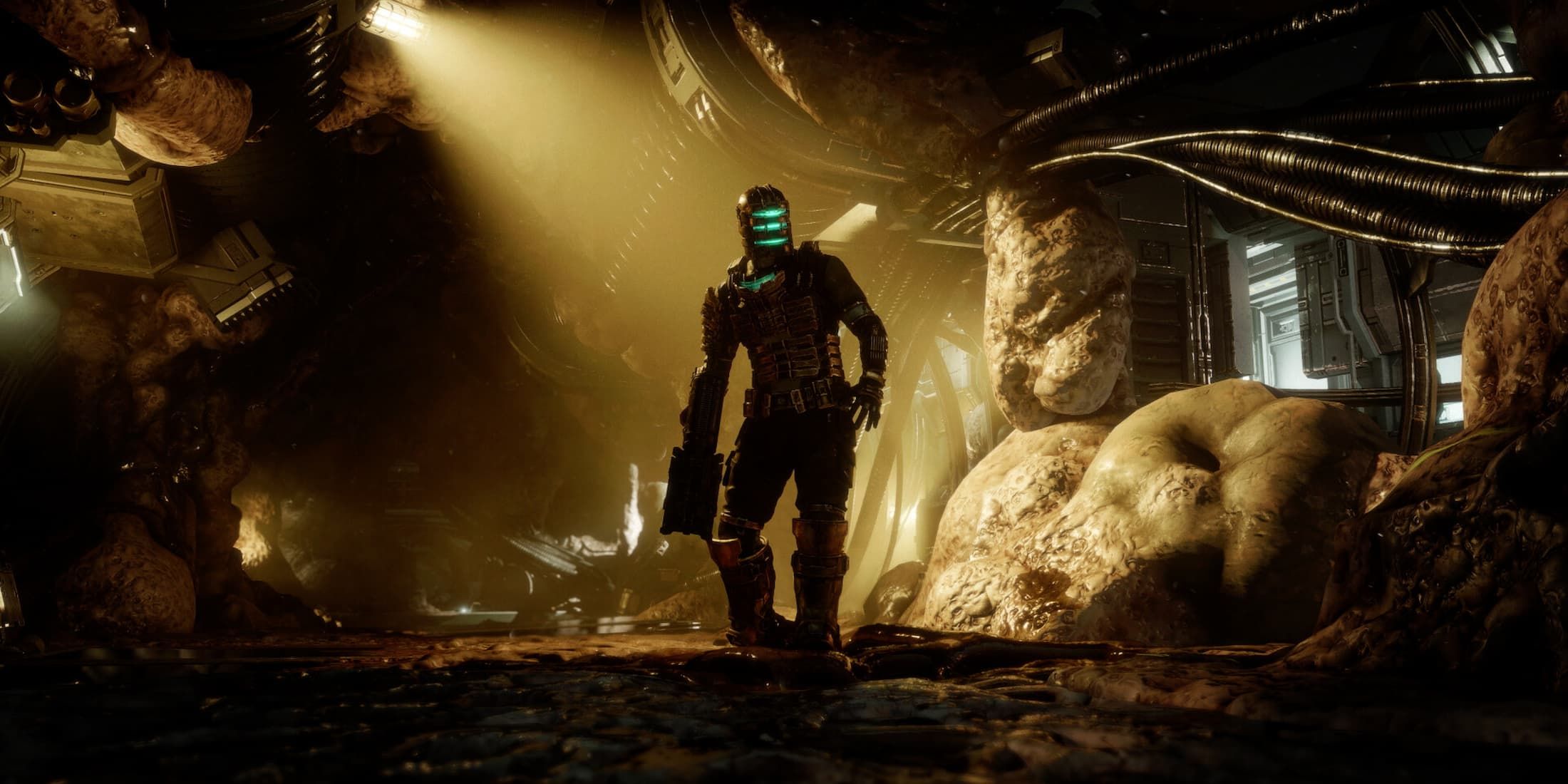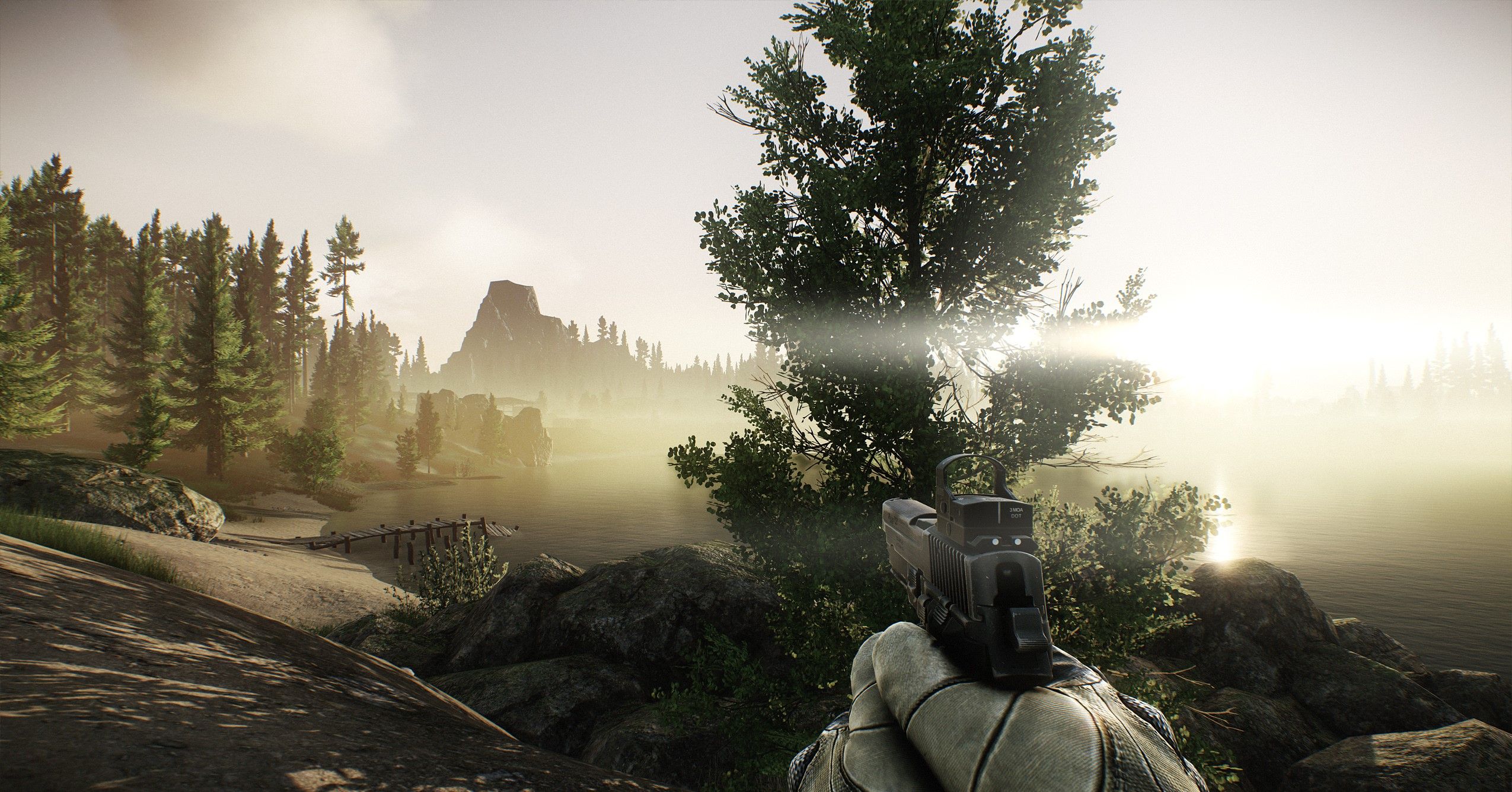Gareth Edwards: Yeah, please.
I think any filmmaker probably starts off hoping they're an auteur and then spends — if they're very lucky and they get to do stuff — spends the next part of their career being really worried they're not and they're just this journeyman you're talking about. And so, I really hope not. It keeps me awake at night. I mean, basically that's all I'm doing my whole life is just trying not to be that guy. But, equally, I grew up with "Star Wars," "Godzilla," "Jurassic Park," and I want to play in those sandboxes. If someone gives me them, I'll take it. So, it's super exciting. But then the game becomes, how do you do something that doesn't feel like you're just doing a karaoke number and singing someone else's song? You want to contribute. Yeah, it's really tricky.
I think the big difference on this movie compared to anything else I've done — there's a couple of differences. One of them was, we had a screenplay. It is the first time I've ever started a film and started pre-production and there's a script that the producers, the studio, the writer, everyone else is pointing at and going, "We're going to go do that." Normally, the tug of war is, what is this movie? The fact that everyone was on the same page...
What was also super interesting was David Koepp. People were — you read a script and you go, "Okay, I'd like to do the following things," and they're a bit like, "Good luck getting that past David," and so I thought, "Oh no." My first meeting with him was on Zoom and as soon as the Zoom appeared, behind him was a poster of "King Kong," the original. I was like, "Oh, you like 'King Kong'?" We just started talking about "King Kong," and then talking about monster movies. I don't know how [much time] went by — half an hour, an hour — and just realized we had exactly the same taste in films. I think that was so helpful in the short time we had, because everyone wants to make a great film. That's all anyone wants to do. The only conflict ever is, what is a great film? If you can agree on that, you are halfway there.
This movie also — add to that fact that, from the day you get the first call, to the day you deliver the movie and it's done — it's usually two and a half years, and this was a year and a quarter. There was something about the fact that we didn't have time to mess around. You couldn't second-guess yourself. You had to go with all your first instincts. My editor [Jabez Olssen] put a quote on the door to the edit suite that said, it was Leonard Bernstein and it said, "Art is when you have a plan and not quite enough time," and it really rang true. Not that we've made art or anything, but it rang true that not having quite enough time is actually quite good. If you have too much time, you procrastinate, you try things that don't work, you don't have that file lit under you.
Also, we delivered — we showed the studio the "director's cut," and then you looked at the schedule and to hit this release date, it was like, we can't mess around. Like, "Give us your notes and, in two weeks, we've got to kind of lock the movie." They gave us all their feedback, we did it. Everyone was happy, and that's the movie. It was quite weirdly straightforward, you know what I mean? There were definitely difficult times, but I look back on it now and I get more rose-tinted with it and I'm like, this was quite a straight path. And I think it all came down to that script, really.
